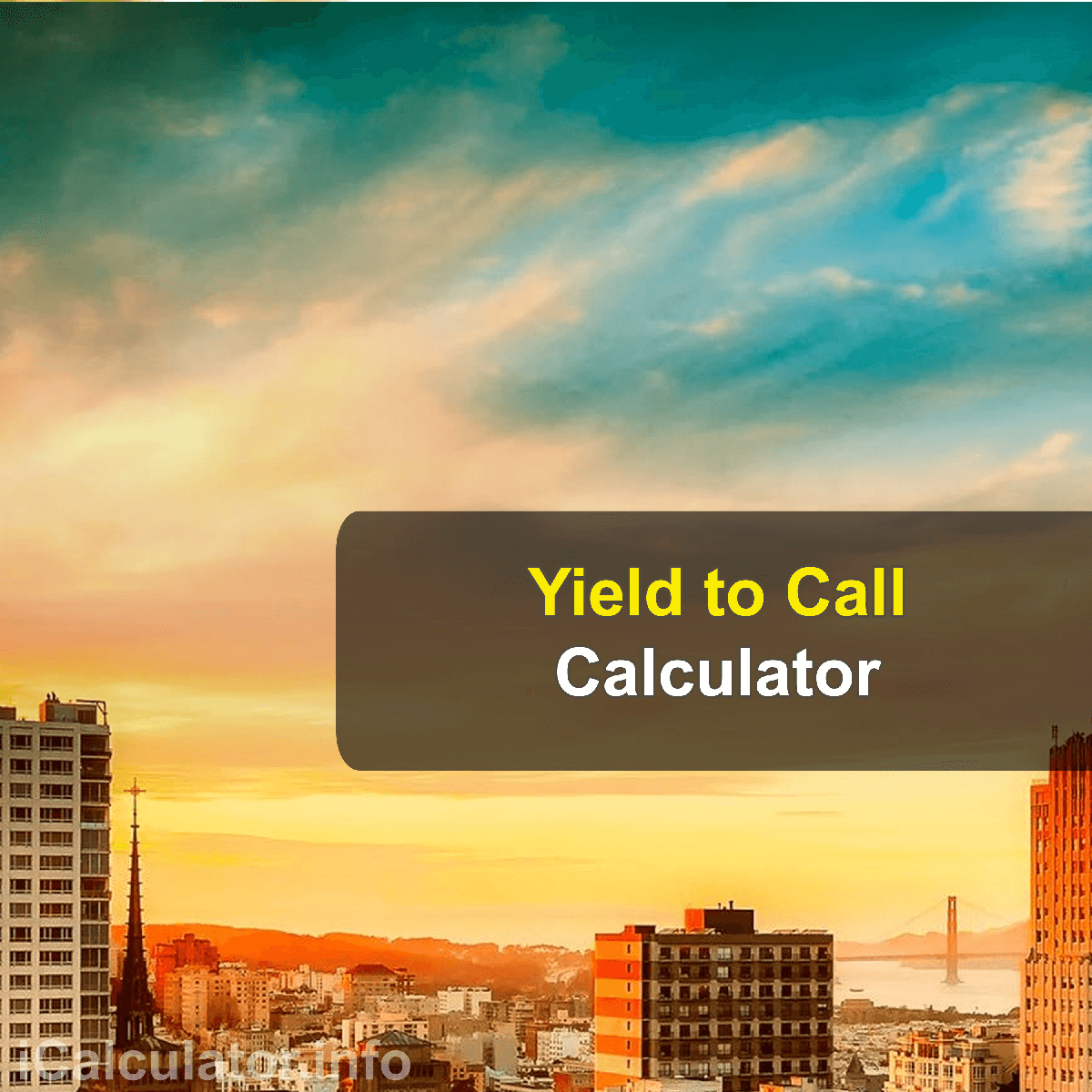Menu
Yield To Call Calculator
Use the Yield To Call Calculator to calculate annual return an investor receives from a particular bond held until its first call date.
Please provide a rating, it takes seconds and helps us to keep this resource free for all to use
Yield To Call Ratio Reflection Of The Real Value Of Your Callable Bonds

Bonds are quite popular investment products because of their nature of good returns with lower risk involved. Callable bonds are one of the many kinds of bonds available for investments. Yield to call defines the return you get as a bondholder if the security is held until the call date or the value that will be received by investors for redeeming the callable bonds before they reach maturity.
Yield to call is the return that investors receive on the redemption of bonds on a call date at a call price. Put simply, the bonds are callable for several years before they reach the maturity date and they can be called at a small premium.
The bonds that are not callable, are redeemable at maturity, let's take a look at the basic differences between yield to call and yield to maturity.
Yield to call VS Yield to Maturity
The yield of a bond is the total return received by the buyer between the time of purchase of the bond and the date when the bond reaches maturity. The calculation of yield to maturity assumes that all the payments from the interest are received from the date of purchase until the bond reaches maturity. It also assumes that each payment is reinvested at the same rate as that of the original bond.
Callable bonds usually offer a better yield to maturity. But once again, the issuer may call it if there is a change in the overall rate of interest or if it finds out that an amount of money can be borrowed in another way with lesser expenses. Yield to maturity does not offer this opportunity.
The callable bonds are usually attached with more than one call date. The price paid is more than the face value of the bond and is determined by the prevailing rates at that point of time. On the other hand yield to maturity has a fixed redemption date.
As discussed above, yield to call is always related to callable bonds, let's see how they can be defined.
What are callable bonds?
Callable bonds are basically a debt instrument that allows the issuing companies to pay off their debts early. These are more common in the corporate sector. The call option helps the companies to offer flexible interest rates if there is a drop in these rates. This, in turn, helps the investors to earn higher returns than if they decide to hold back the bonds till they mature.
These bonds are useful for companies when the interest rates in the market drop. At this point of time, they can call back their existing bonds and sell the new bonds at a lower rate. The callable bonds are often less expensive for the issuer than the normal bonds when interest rates are falling.
Callable bonds are also known as redeemable bonds. The issuer reserves the right to return the investor's principal and stops the interest payment before the bond's maturity. These are generally issued by the companies to pay off their debts or business expansion. The earlier the bonds are called the higher its call value will be.
To calculate yield to call can be a bit complex if done manually. Let's take a look at how you can use the calculator to help you with these calculations.
Yield to Call Calculation Using a Calculator
The calculation of the yield to call is done to know the rate of return received by an investor. Some conditions that should be met are:
- The bond will be held until the call date.
- The bond will be called on the date which is the earliest.
- The bond will be purchased at the current price of the market.
The yield to call calculator uses the following formula for the calculations:
Where:
- P = Market price
- C = the annual interest payment
- CP = the call price
- T = the number of years remaining before the call date arrives
- YTC = the yield to call
The above components are required to be entered into the calculator and on the basis of the inputs, the calculator will provide you with the results.
Note: This formula is not enough for finding out the YTC directly. A process of iteration is necessary for finding out the final value if it is being done manually.
Using the online yield to call calculator designed by iCacluator will benefit you in different ways. The calculator does the complex calculations with the simple click of a mouse, all you have to do is enter the accurate values in order to get accurate results.
You can compare the yield to call on your bonds with several parameters by editing the details to get the results for a different calculation.
Issuer & Investors both can take advantage of the calculator by assessing the profitability of callable bonds.
Finance Calculators
You may also find the following Finance calculators useful.
- Credit Card Calculator
- Residual Value Calculator
- Personal Loan Calculator
- Dividend Discount Calculator
- Cost Of Goods Sold Calculator
- Emi Calculator
- Annual Loan Repayment Calculator
- Margin Calculator
- Accounts Received Turnover Rate Calculator
- Average Rate Of Return Calculator
- Retirement Comparison Calculator
- Discount Factor Calculator
- Insolvency Calculator
- Annual Amortization Calculator
- Present Value Calculator
- Annuity Depreciation Calculator
- Yield To Call Calculator
- Payments Calculator
- Automobile Expense Calculator
- Modified Internal Rate Of Return Calculator